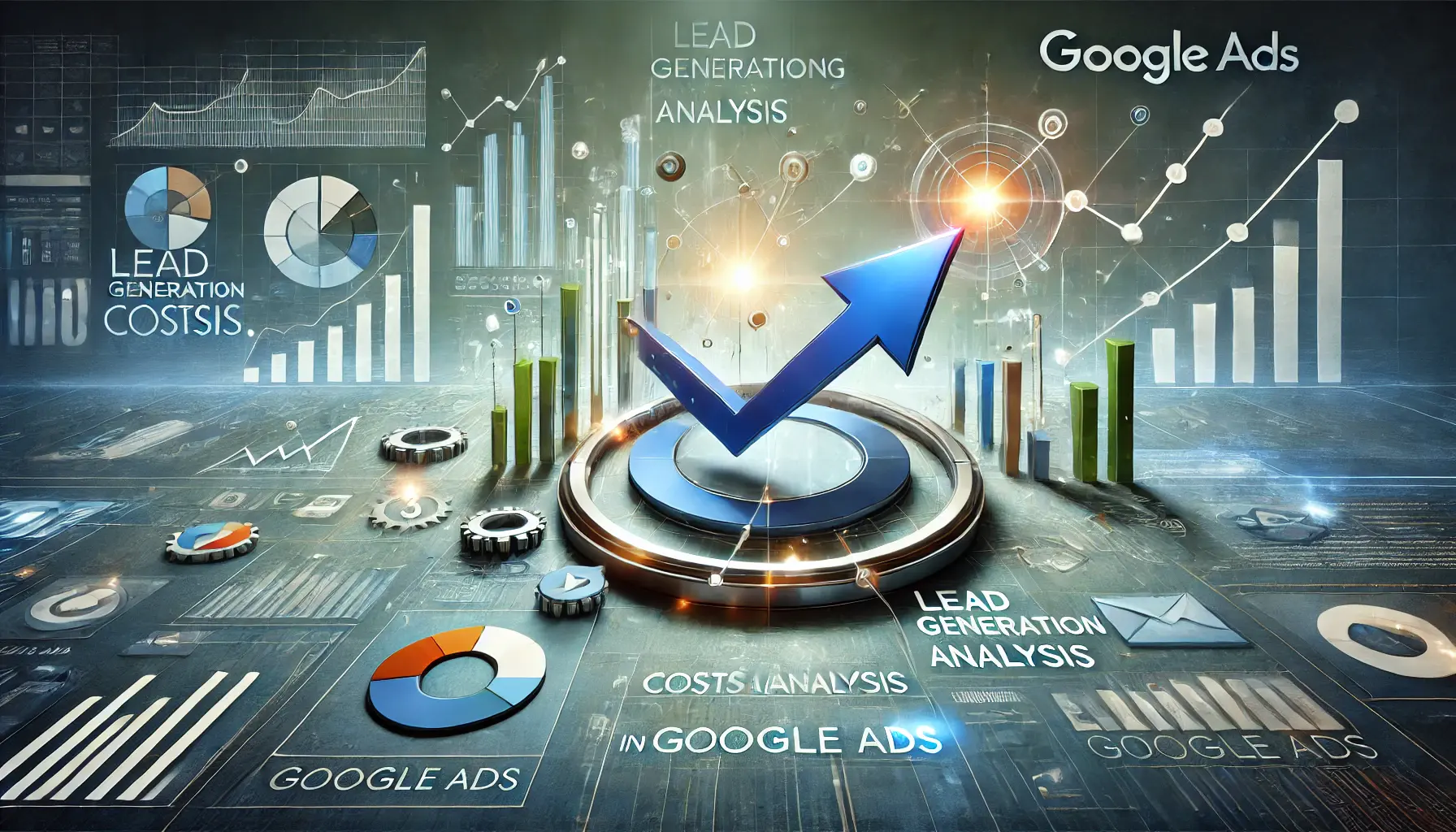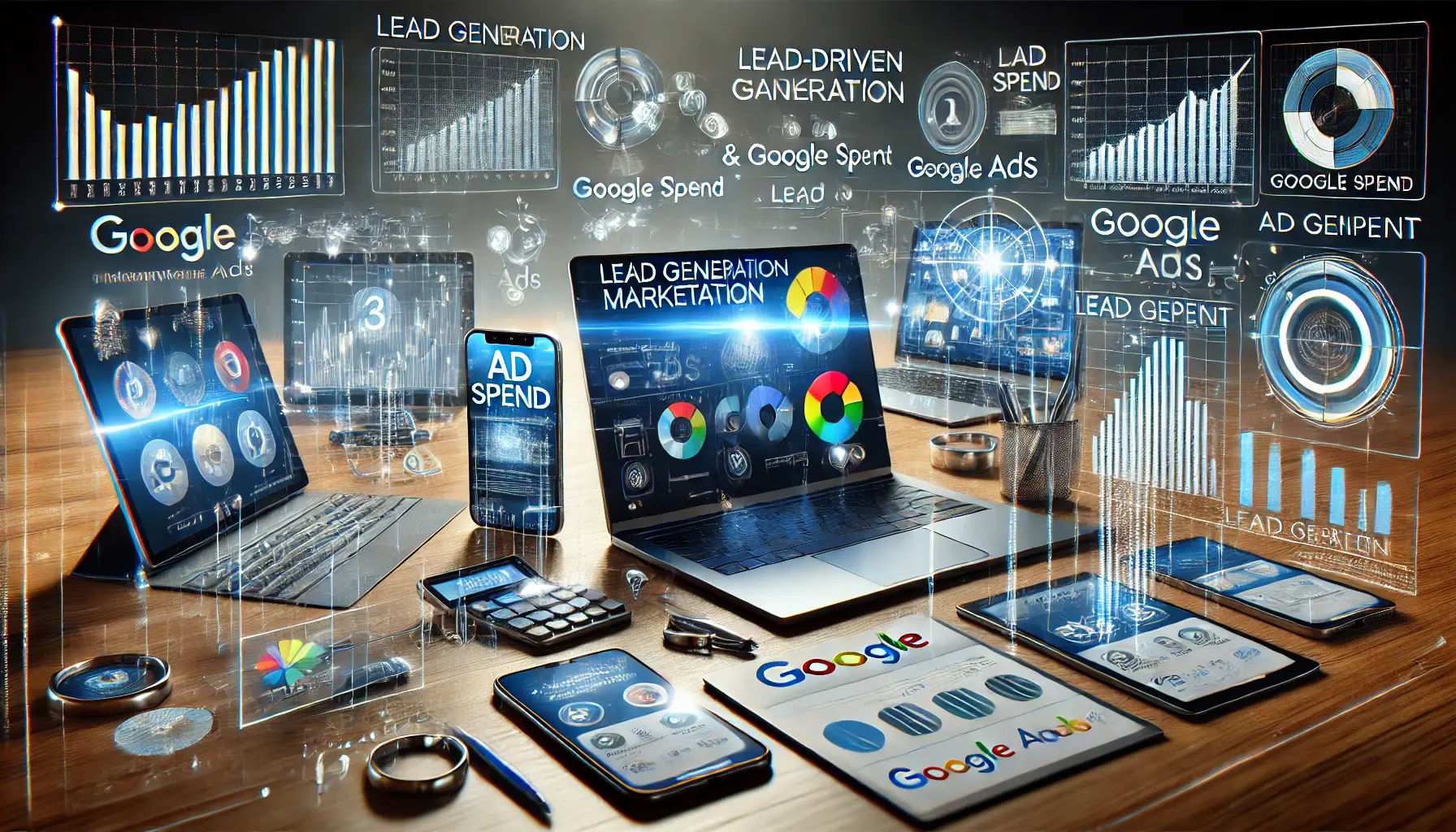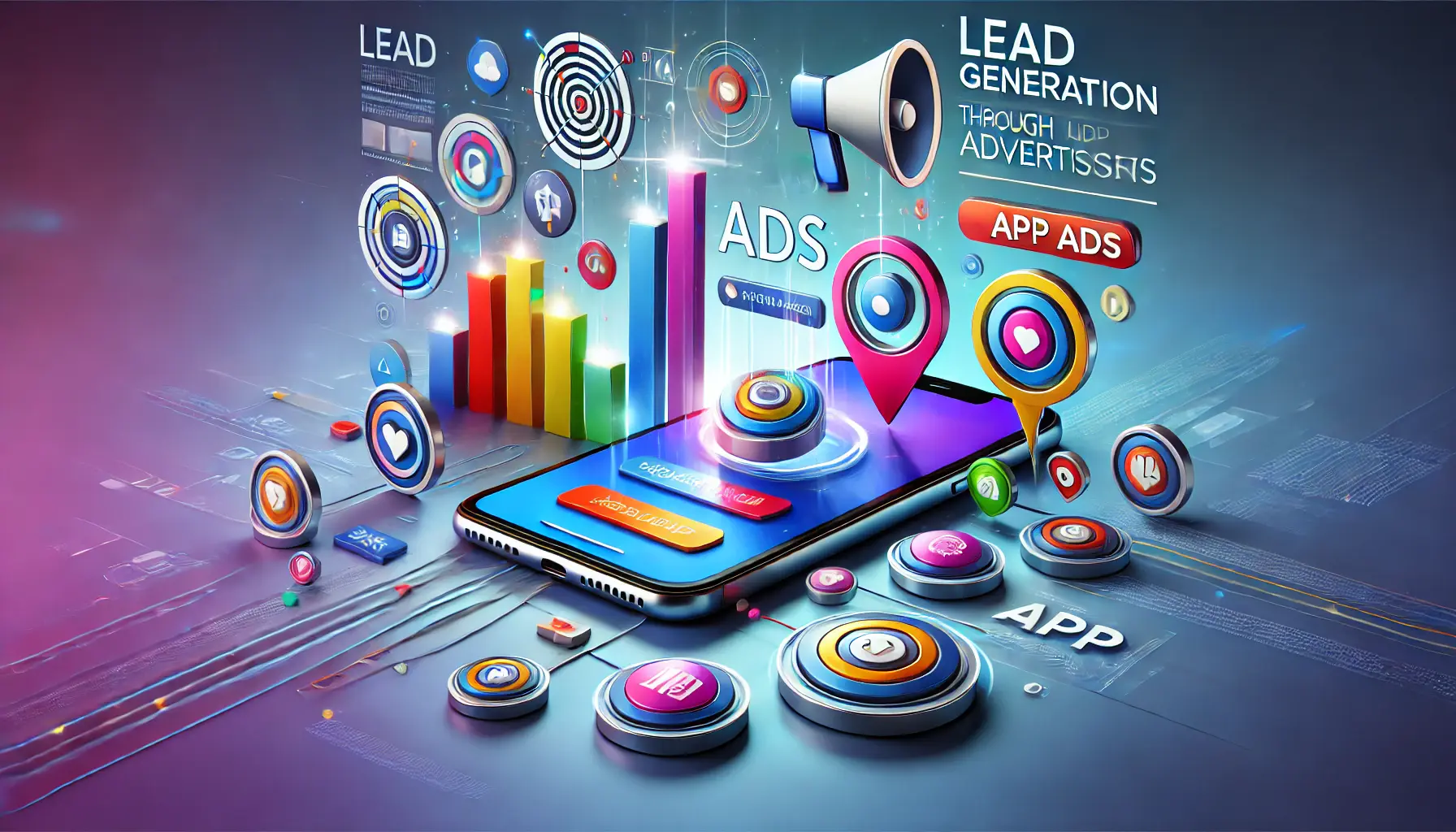Generating leads forms the backbone of any successful digital marketing strategy, and really understanding how much it actually costs will go a long way in helping you maximize ROIReturn on Investment, a measure of the profitability of an investment..
In Google Ads, the cost of lead generation can vary significantly depending on several factors, ranging from industry competition to the efficiency of your ad.
In this article, we will dive deep into how lead generation works on Google Ads and explore strategies to ensure costs remain as low as possible while generating high-quality leads.
By the end, this article will provide you with tips on managing ad spend and improving the efficiency of your campaigns.
Google Ads is one of the most effective channels for capturing leads, but understanding what contributes to lead generation costs is equally important.
Whether you’re new to digital marketing or a seasoned pro, grasping these factors is crucial for creating cost-efficient advertising campaigns.
Let’s start by breaking down the basics of lead generation in Google Ads and the key metrics you need to monitor.
- Understanding Lead Generation in Google Ads
- Factors Affecting the Cost of Lead Generation
- Effective Bidding Strategies to Lower Lead Generation Costs
- Analyzing Lead Generation Performance Over Time
- Tips to Lower Lead Generation Costs in Google Ads
- Final Words on How to Decrease Lead Generation Cost in Google Ads
- FAQs for Reducing Lead Generation Costs in Google Ads
Understanding Lead Generation in Google Ads
Lead generation in Google Ads refers to the process of capturing the interest of potential customers in your product or service through targeted advertisements.
These leads are usually individuals who have a high possibility of converting into paying customers.
Therefore, lead generation is an essential activity for any business as part of its marketing strategy.

An engaging image depicting the process of lead generation in digital marketing.
What is Lead Generation?
Lead generation involves attracting and converting strangers into prospects who might be interested in your business.
Within Google Ads, this means creating ads that attract potential customers who are likely to click and convert—such as by filling out a form, subscribing to a newsletter, or requesting a product demo.
This process requires a thorough understanding of your audience and precise targeting.

An informative image showcasing the various Google Ads formats that facilitate lead generation.
How Google Ads Facilitates Lead Generation
Google Ads simplifies lead generation by offering a variety of tools to help you reach the right audience at the right time.
From search ads and display ads to YouTube ads, the platform provides numerous formats to cater to different lead generation needs.
Google’s advanced targeting options, such as keywords, demographics, and interests, allow advertisers to fine-tune their campaigns for specific groups, ensuring your ads are seen by people most likely to convert into leads.

An informative image showcasing key metrics to monitor for effective lead generation.
Key Metrics to Monitor for Lead Generation
Tracking the right metrics is crucial for gaining insights into how your lead generation campaigns are performing.
Key metrics to focus on include:
- Cost per Lead (CPL): This metric shows how much it costs you to acquire a single lead. The goal is to keep CPL as low as possible while maintaining lead quality.
- Conversion Rate: This measures the percentage of people who take the desired action after clicking on your ad. A higher conversion rate means more leads for your business.
- Click-Through Rate (CTR): This shows how often people click on your ad after seeing it. A high CTR often correlates with more leads.
By closely monitoring these metrics, you can fine-tune your campaigns to improve performance and reduce lead generation costs over time.
Lead generation in Google Ads requires a deep understanding of audience targeting and precise strategies to capture high-quality leads.

An informative image depicting various factors affecting the cost of lead generation.
Factors Affecting the Cost of Lead Generation
When running a lead generation ad on Google Ads, several variables come into play to define how much you will end up paying for each lead.
Being aware of these factors in detail will help you optimize your budget and reduce your overall lead generation costs.
Let’s delve into some key drivers of lead generation costs within Google Ads.
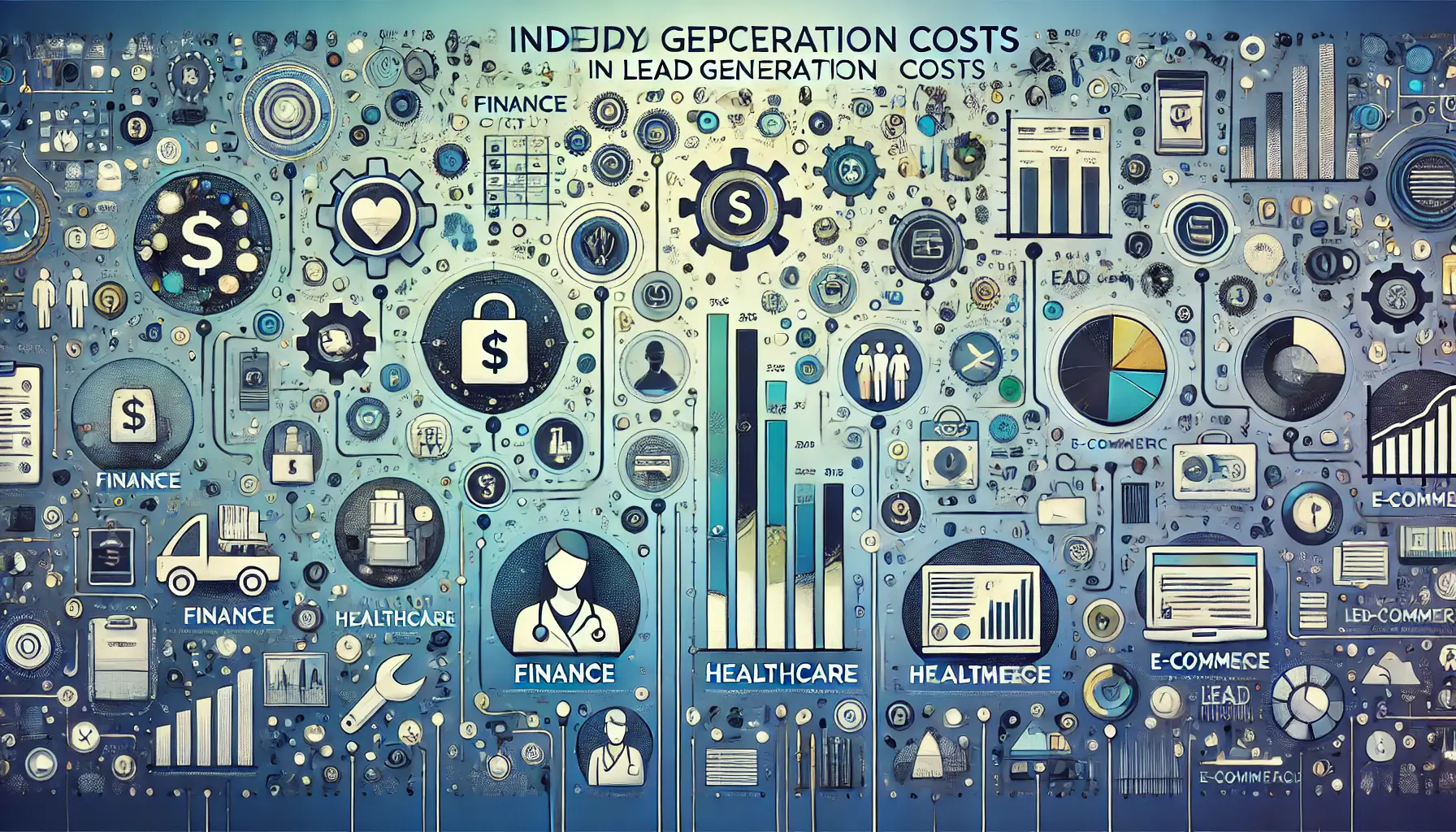
An informative image showcasing lead generation cost variations across different industries.
Industry-Specific Variations in Costs
The industry you’re in will, of course, have a significant impact on costs.
Highly competitive industries—like finance, insurance, or legal services—have much higher lead generation costs due to the heavy competition for clicks.
Conversely, industries that are not as competitive, including niche markets like e-commerce, tend to have lower costs.
Research suggests that industries with higher customer lifetime value (CLV) generally have higher costs per lead, as businesses are willing to pay more for leads that could result in greater profits.
You can manage these costs by understanding your competition and setting realistic expectations for your cost-per-lead based on your industry.
Additionally, running localized or highly targeted campaigns can help reduce competition and, in turn, lower your cost per lead.
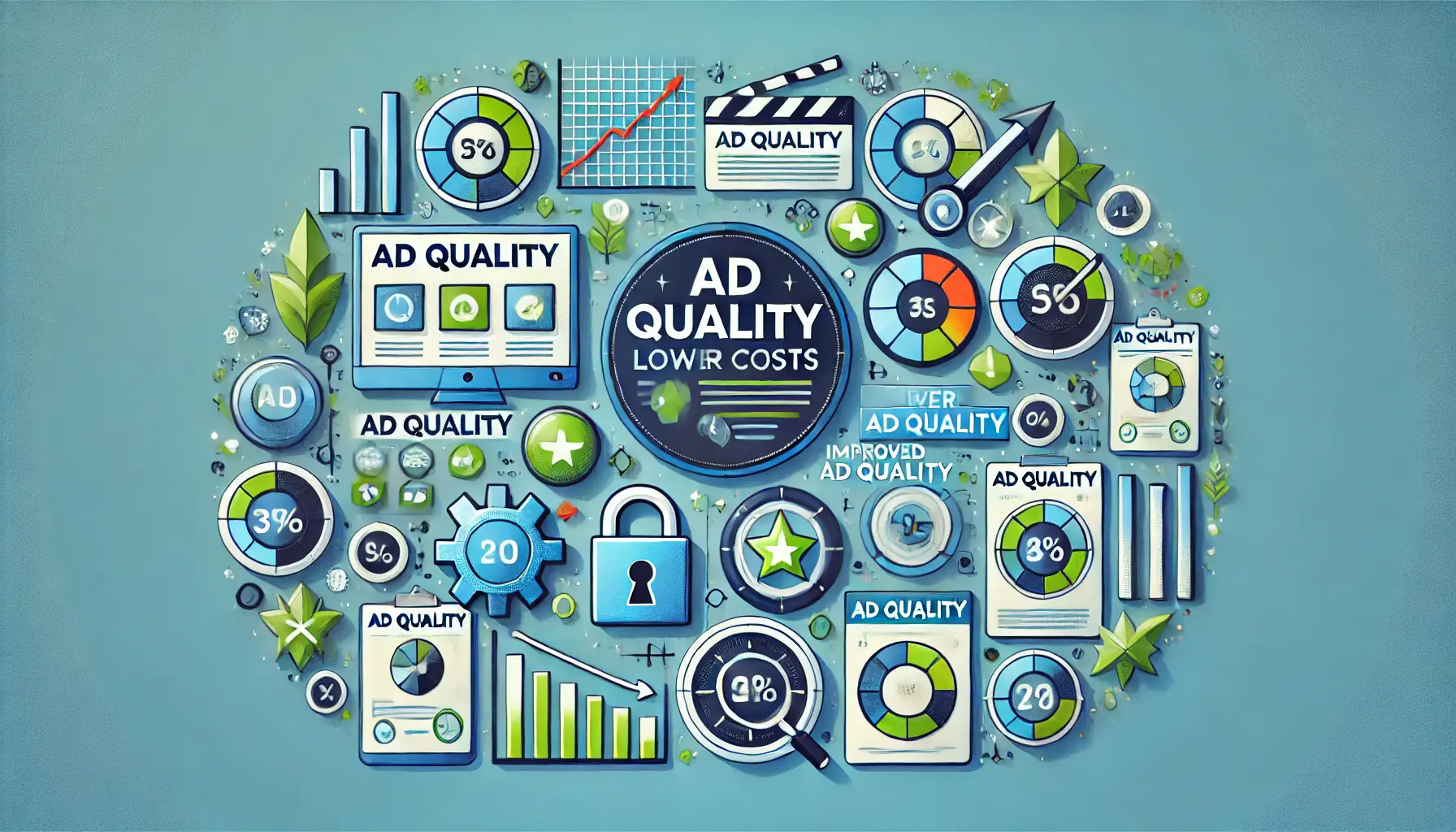
An engaging image showcasing how ad quality affects lead generation costs.
Ad Quality and Its Impact on Costs
The quality of your ad directly influences your lead generation costs.
Google Ads uses a metric known as Quality ScoreA metric that Google Ads uses to rate the relevance of your ad, keywords, and landing page. to evaluate the relevance of your ad, landing page, and keywords.
A higher Quality Score can lower your cost-per-click (CPCCost per Click, the price you pay for each click on your ad.), which will also reduce the cost per lead.
Ads that are more relevant to user intent, with better ad copy and high-quality landing pages, receive better ad placements at a lower cost.
To improve ad quality, ensure your ads match user search intent and provide a seamless, relevant experience on the landing page.
By improving your Quality Score, you can significantly lower your lead generation costs over time.

An informative image showcasing the influence of competition on lead generation costs.
The Influence of Competition in Determining Lead Generation Costs
Google Ads operates on an auction model, meaning the level of competition for keywords within your niche will largely determine how much you will have to pay to generate a lead.
The more businesses bidding on the same keywords, the higher the cost per click, which directly influences your cost-per-lead (CPLCost per Lead, the amount you spend to generate a single lead.).
Businesses in highly competitive industries need to be strategic, either by bidding on long-tail keywords or creating more specific ad copy to target narrower audiences.
You can combat competition by leveraging ad strategies like A/B testing, experimenting with less competitive keywords, and using Google’s audience targeting features to show ads to users most likely to convert into leads.
These tactics will help you optimize your budget and reduce lead generation costs over time.
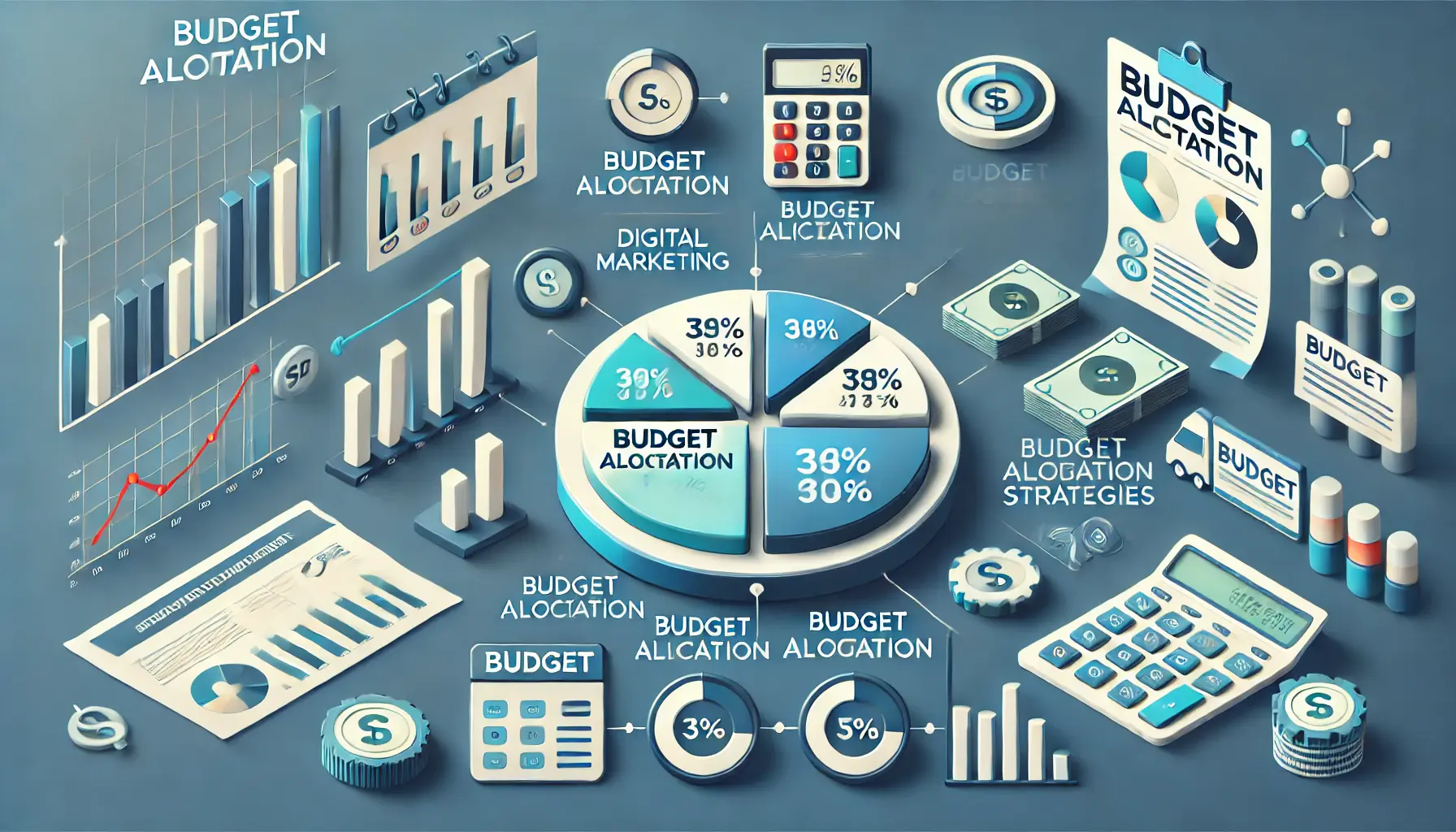
An informative image depicting various budget allocation strategies for campaigns.
Budget Allocation Strategies
How you allocate your budget across campaigns also plays a major role in the cost of lead generation.
Businesses that spread their budget too thin may struggle to generate meaningful results.
Instead, it’s more effective to focus your budget on fewer, highly targeted campaigns to maximize efficiency.
You can also leverage Google’s smart biddingA set of automated bid strategies that use machine learning to optimize for conversions or value in each auction. strategies to ensure more of your budget is spent on conversions rather than clicks.
The key to reducing lead generation costs over time is to allocate more budget to high-performing campaigns and back up your spending decisions with data.
Be aware of the factors that can drive up your lead generation costs, such as high competition in your industry and poorly optimized ads.
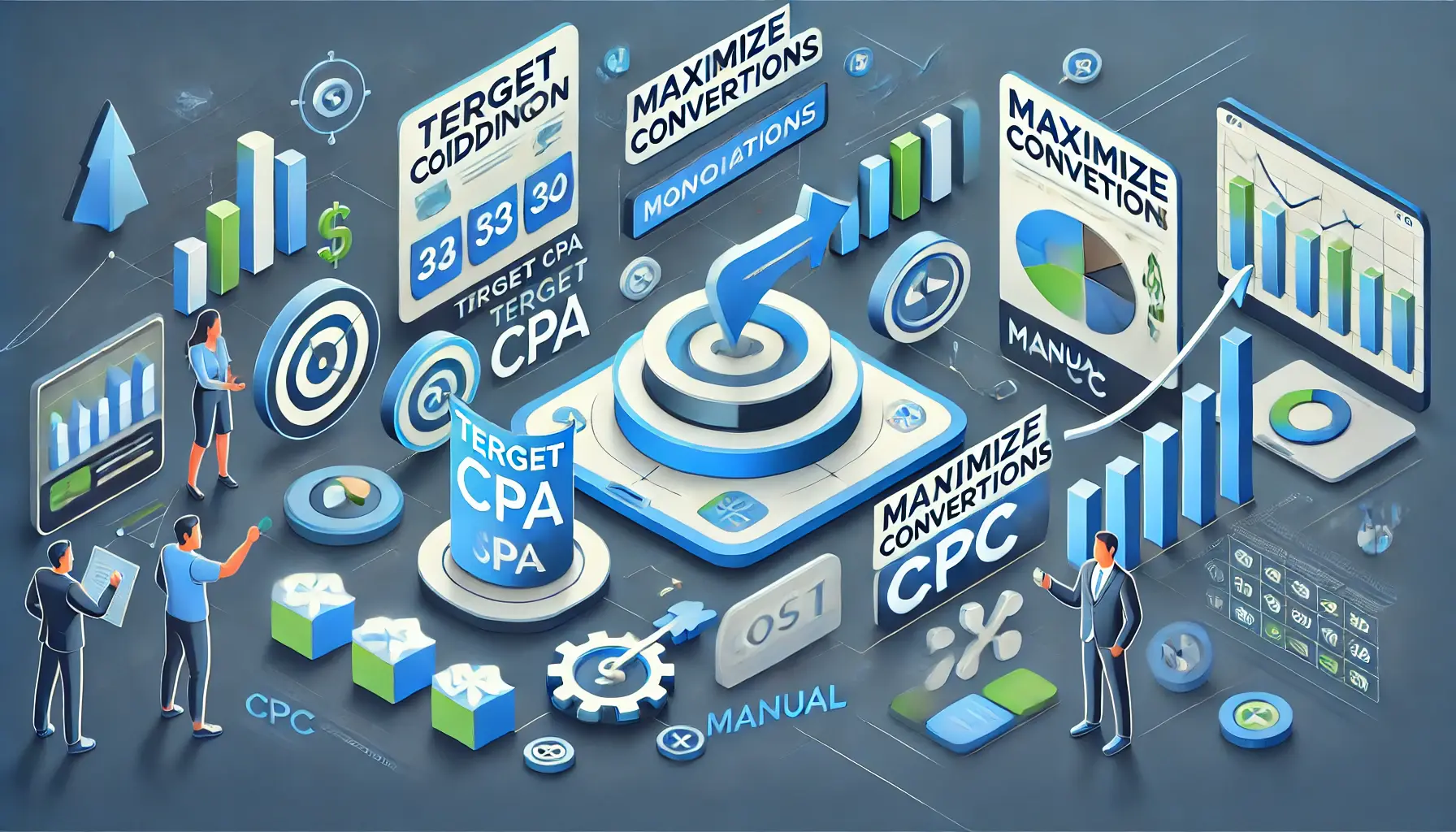
An informative image showcasing bidding strategies to reduce lead generation costs.
Effective Bidding Strategies to Lower Lead Generation Costs
One of the best ways to cut down on lead generation costs in Google Ads is to optimize your bid strategy.
By choosing an appropriate bidding model and making data-driven adjustments, you can drastically lower your cost per lead (CPL).
Let’s explore a few key bidding strategies to help reduce your lead generation costs.

An informative image showcasing how to choose the right bidding model for campaigns.
Picking the Right Bidding Model
Google Ads offers several bidding models, each suited to different campaign goals.
For lead generation, the most effective models are those focused on conversions.
Here are some options:
- Target CPA (Cost per Acquisition): This model lets you set a target cost per acquisition. Google will automatically adjust your bids to help you get as many leads as possible at or below your target CPL.
- Maximize Conversions: This automated bidding strategy optimizes your bids to get the maximum number of conversions within your budget. It’s ideal if you’re focused on generating a large volume of leads and can afford some variation in cost per lead.
- Manual CPC (Cost per Click): While this model gives you more control over individual bids, it can lead to higher lead generation costs if not carefully managed. It’s best for advertisers who need tight control over their bidding.
The right bidding model depends on your lead generation goals, budget, and the level of control you want over your campaigns.
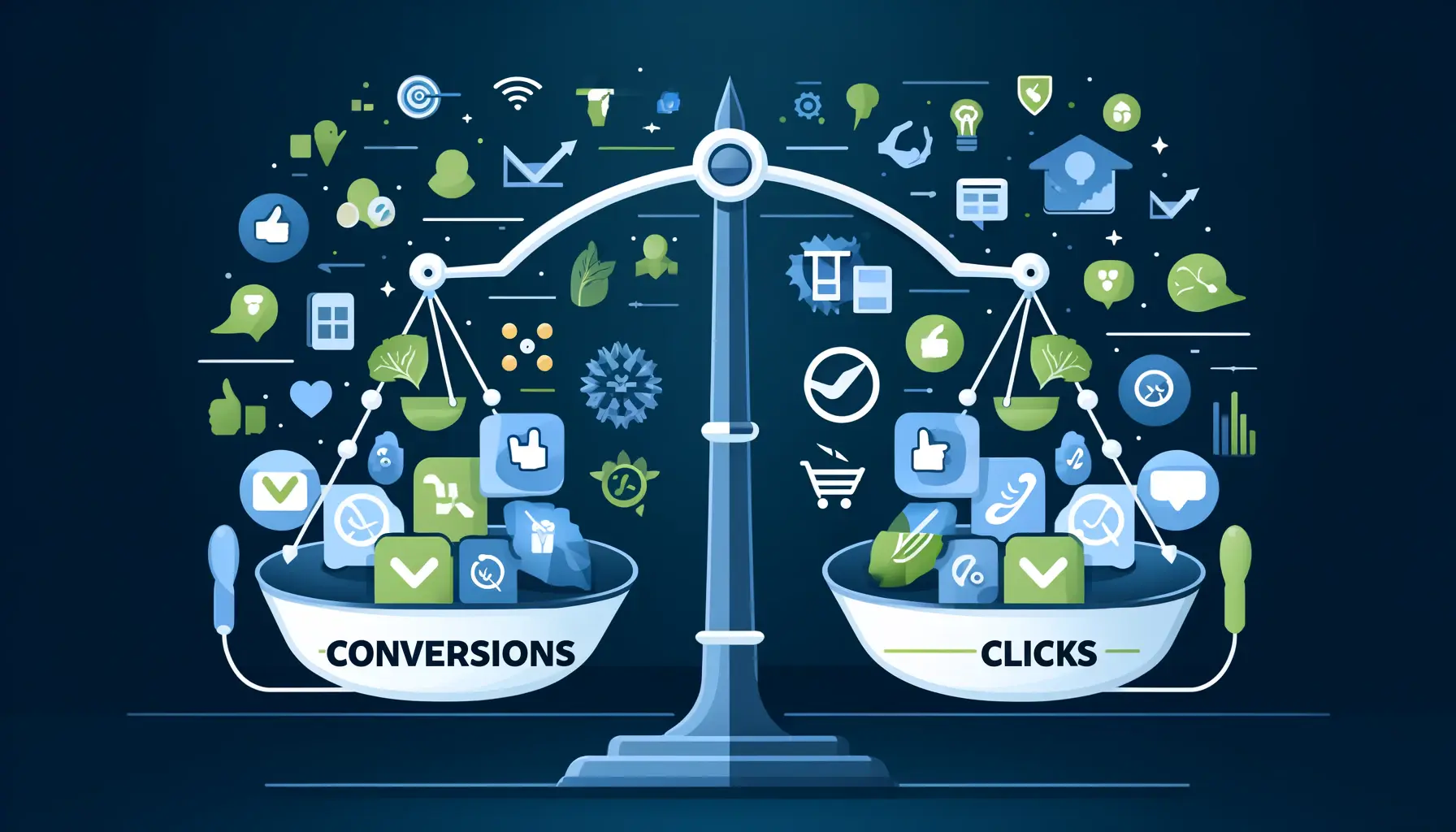
An informative image showcasing the differences between optimizing for conversions and clicks.
Optimizing for Conversions vs. Clicks
One of the biggest mistakes advertisers make is focusing too much on clicks rather than conversions.
While clicks are important, real leads are the ultimate goal of any lead generation campaign.
Optimizing for conversions ensures that your budget is spent on ads more likely to generate leads rather than simply attracting traffic.
You can optimize for conversions by using Google’s Smart Bidding strategies, such as Target CPA or Maximize Conversions.
These strategies automatically adjust bids in real-time based on the likelihood of a user converting, allowing you to focus on quality leads and reduce wasted ad spend.

An informative image showcasing the differences between manual and automated bidding strategies.
Manual vs. Automated Bidding
Manual bidding provides more granular control but requires frequent monitoring and adjustments to ensure your bids align with your goals.
Automated bidding strategies like Maximize Conversions or Target CPA use machine learning to optimize bids in real-time, which can save time and lower costs.
For most lead generation campaigns, automated bidding is the more cost-effective option, especially when you have a significant amount of data for Google’s algorithms to work with.
However, manual bidding can still be useful for niche campaigns where you want to control specific keywords or ad groups more closely.

An informative image showcasing the benefits of leveraging smart bidding for improved advertising results.
Leveraging Smart Bidding for Better Results
Google’s Smart Bidding strategies use machine learning to predict which users are more likely to convert and automatically adjust bids.
Some key benefits of Smart Bidding for lead generation include:
- Real-Time Bidding Adjustments: Smart Bidding responds to real-time data by adjusting your bids based on factors such as device, location, and user behavior.
- Improved Cost Efficiency: By focusing on users more likely to convert, Smart Bidding can help lower your CPL while increasing conversion rates.
- Automated Learning: The more data your campaigns generate, the smarter and more efficient Smart Bidding becomes, leading to better long-term results.
Leveraging Smart Bidding is a reliable way to reduce lead generation costs and optimize campaign performance, especially when working with high-volume data.
Optimizing your bidding strategy can significantly lower your cost per lead (CPL) while maintaining a high volume of conversions.
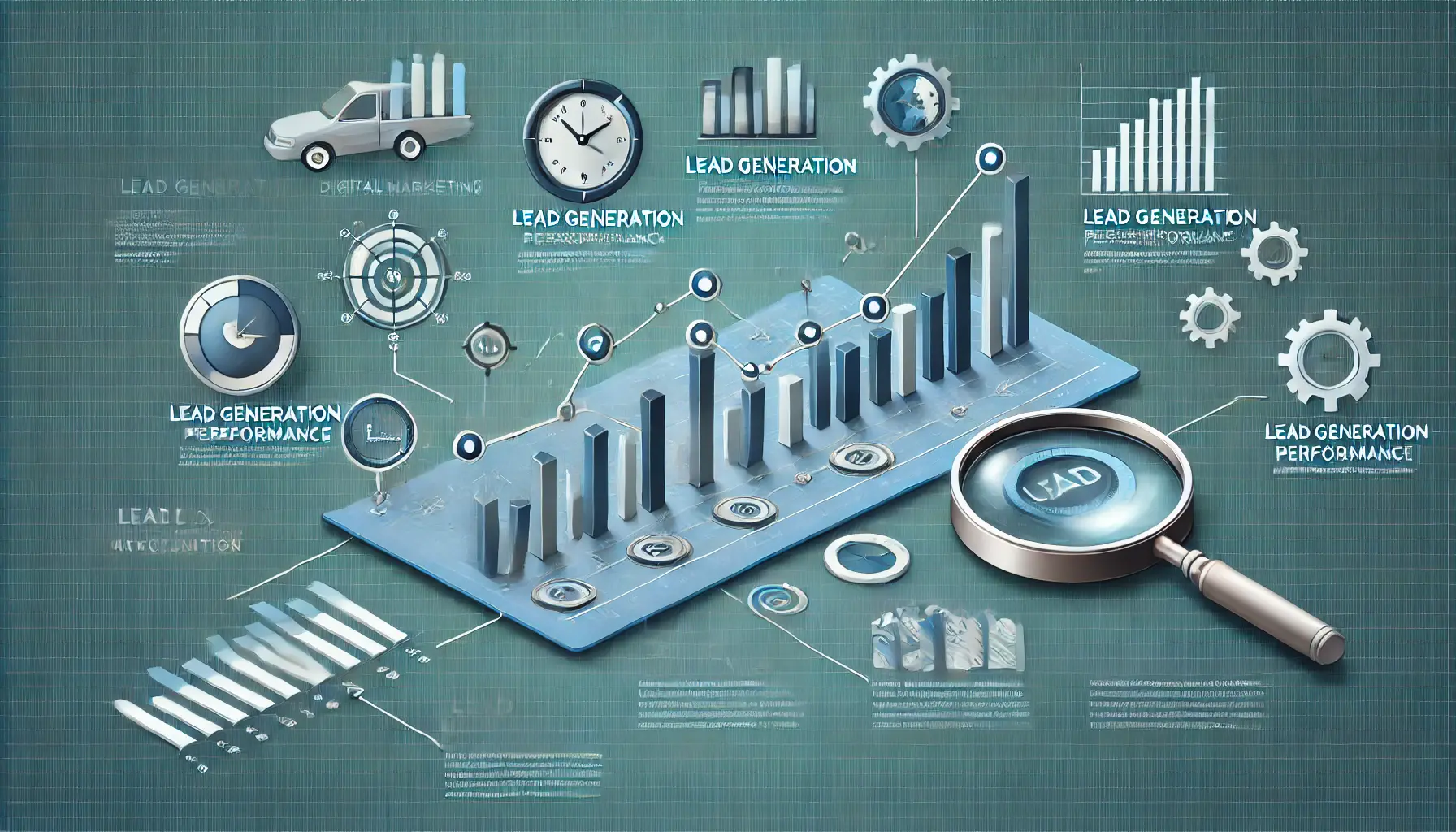
An informative image showcasing the analysis of lead generation performance trends.
Analyzing Lead Generation Performance Over Time
Regular analysis of lead generation performance is essential for improving your Google Ads campaigns while reducing costs.
By analyzing historical data and tracking key performance indicators (KPIs), you can predict trends, refine your strategy, and ultimately lower your cost per lead (CPL).
Let’s explore how you can analyze the performance of lead generation over time and use that data to optimize your campaigns.

An informative image showcasing the use of historical data to improve lead generation strategies.
Using Historical Data to Improve Lead Generation
The best way to improve your lead generation efforts is by looking at historical data.
By re-evaluating the performance of past campaigns, you can identify patterns in user behavior, choose high-performing keywords, and understand which ad formats yield the best results.
Over time, this data helps you refine your strategy, eliminating inefficiencies that have unnecessarily driven up lead generation costs.

An informative image showcasing the process of analyzing historical data in digital marketing.
Historical Data Analysis
When analyzing historical data, focus on the following key areas:
- Cost per Lead (CPL) History: Track how your CPL has varied over time. This can help you determine which campaigns or tactics have improved or worsened your cost efficiency.
- Conversion Rate: Examine changes in your conversion rate to understand which campaigns, ads, or landing pages are generating the most leads.
- Click-Through Rate (CTR): Assess your CTR to see if your ads are still resonating with your target audience or if it’s time for new creative work.
By utilizing historical data, you can fine-tune your lead generation strategy, avoid overspending, and streamline your campaigns for better performance.
An informative image showcasing the trends in Cost Per Lead (CPL) over time.
Tracking Cost Per Lead (CPL) Trends
Tracking your CPL over time is perhaps the most important indicator of whether your lead generation efforts are paying off.
CPL trends can reveal if your campaigns are becoming more cost-efficient or if they need further optimization.
Ideally, you want to see a gradual decline in CPL as you adjust bidding strategies, targeting options, and ad creatives.
To track CPL trends effectively, set benchmarks for each campaign or ad group.
Comparing your actual CPL against these benchmarks allows you to identify areas for improvement or inefficiency.
Regularly reviewing these metrics ensures that your lead generation campaigns stay on track.

An informative image showcasing the evaluation of Return on Investment (ROI) for achieving long-term success.
Evaluating ROI for Long-Term Success
While reducing your cost per lead is crucial, it’s equally important to evaluate the return on investment (ROI) of your lead generation efforts.
ROI considers the quality of the leads you’re generating and how many convert into paying customers.
A lower CPL does not always equate to a higher ROI if the leads are not high quality.
When evaluating ROI, focus on the lifetime value of customers acquired through your lead generation campaigns.
If you’re generating high-quality leads that convert into long-term customers, a higher CPL may be worth the investment.
Balancing your CPL against the overall value of your leads is key to long-term success in your Google Ads campaigns and maximizing profitability through your lead generation strategy.
Regular performance analysis allows you to track trends in cost per lead (CPL) and conversion rates, ensuring long-term efficiency in your campaigns.

An informative image showcasing tips for reducing lead generation costs in Google Ads.
Tips to Lower Lead Generation Costs in Google Ads
Lowering lead generation costs without compromising quality is the goal of every business using Google Ads.
The key to achieving this lies in making strategic adjustments to your campaigns—from optimizing ad copy to refining targeting options.
Here are some efficient tips that will help you reduce your cost per lead (CPL) without compromising on lead quality.
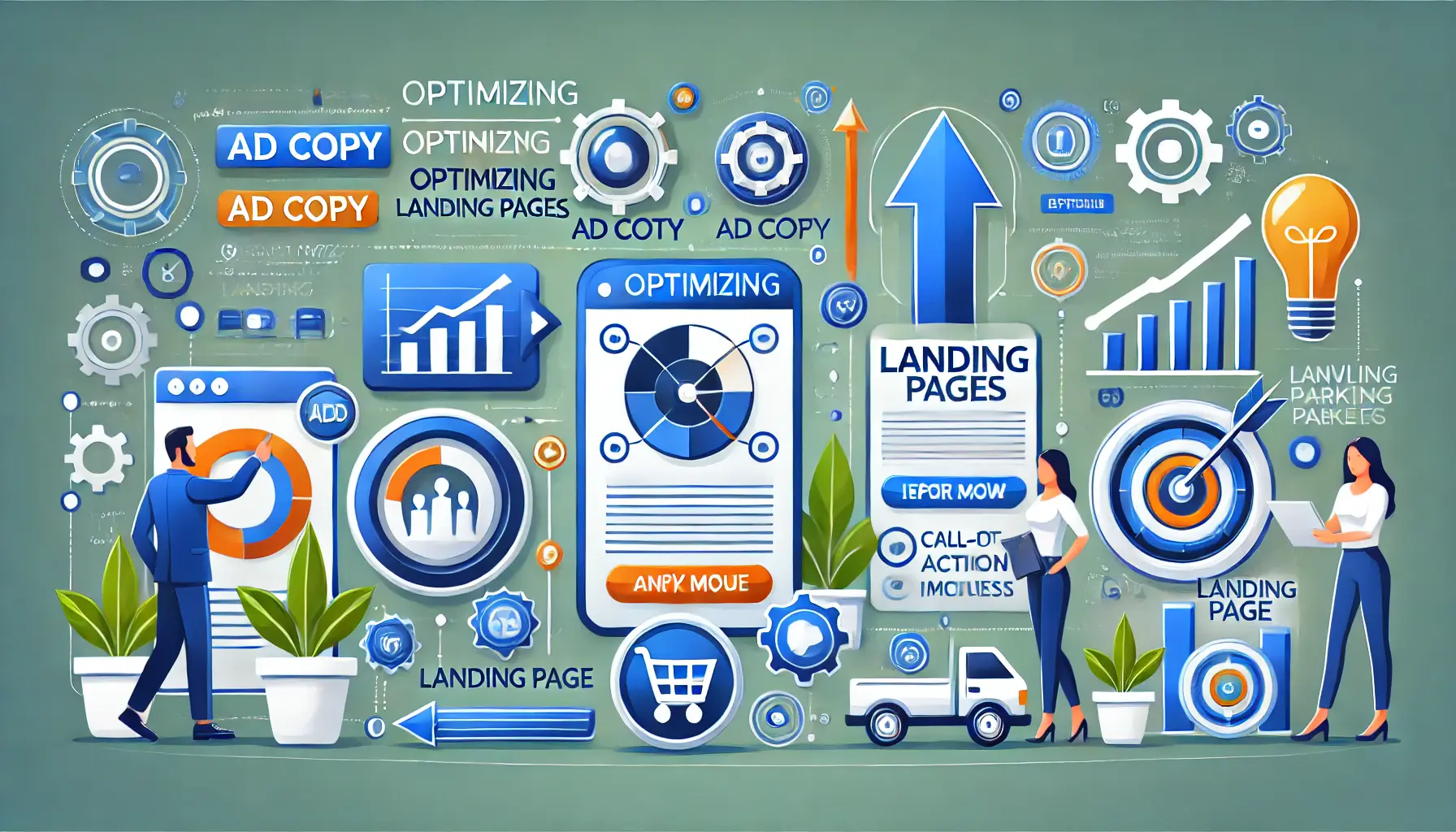
An informative image showcasing the optimization of ad copy and landing pages.
Optimizing Ad Copy and Landing Pages
Your ad copy and landing page are two of the highest-priority factors in determining the success of your Google Ads campaigns.
Well-written ad copy that speaks to your target audience can increase your click-through rate (CTRClick-Through Rate, the percentage of people who click on your ad after seeing it.), while a relevant and user-friendly landing page ensures a higher conversion rate.
To lower lead generation costs, ensure that your ad copy is clear, engaging, and directly addresses the needs of your target audience.
The landing page should be optimized for both relevance and performance.
Make sure the message of the ad is reflected on the landing page and includes a clear call to action.
A seamless user experience on the landing page can significantly reduce your CPL by improving conversion rates.
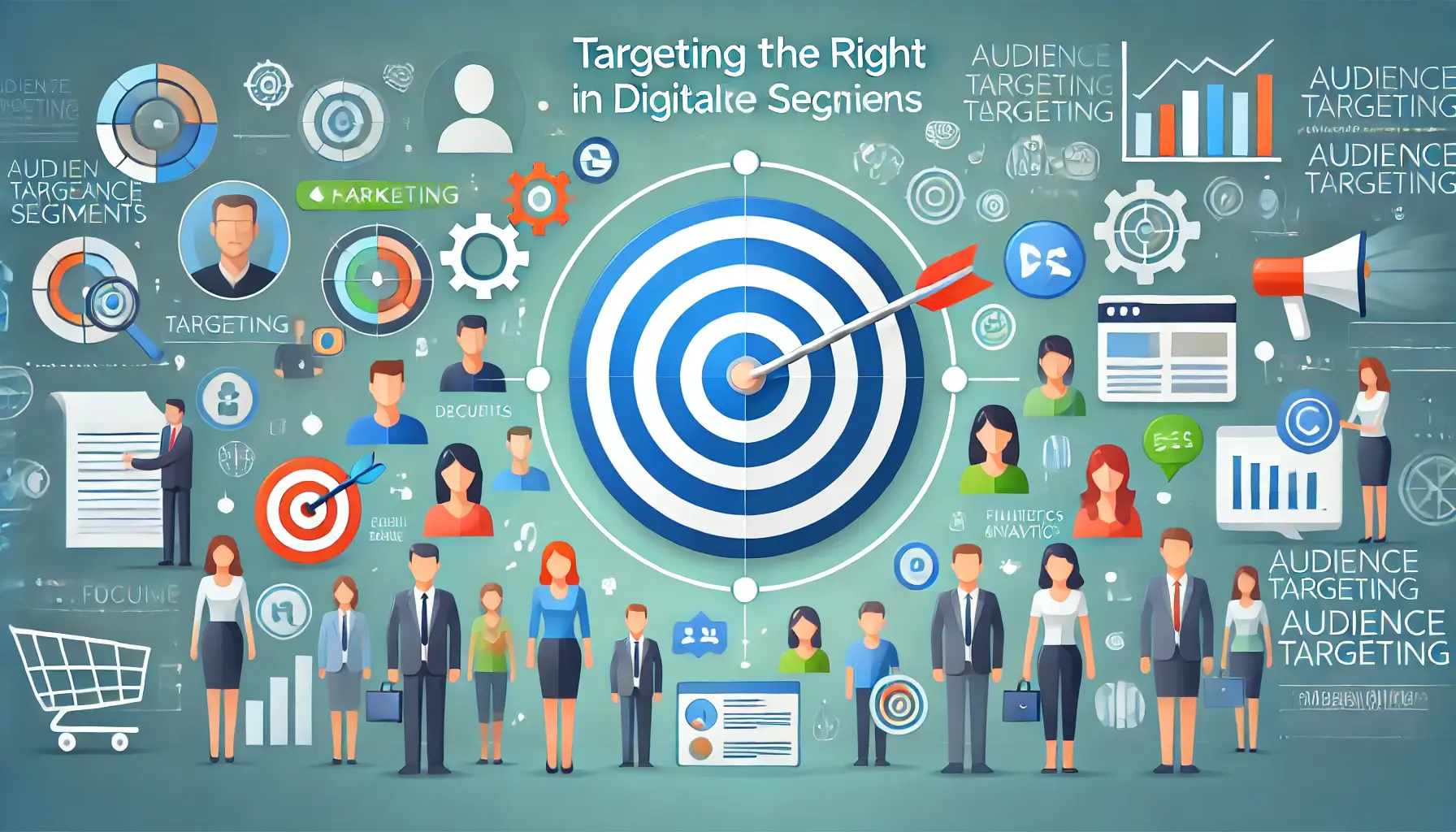
An informative image showcasing the importance of targeting the right audience segments.
Targeting the Right Audience Segments
One of the most effective ways to lower lead generation costs is by targeting the right audience segments.
Google Ads allows you to target users based on demographics, interests, and remarketing options.
This ensures that you focus your budget on users who are most likely to convert, while minimizing spend on irrelevant clicks.
Additionally, using features like Google’s Custom Audiences or Similar Audiences can help you reach new customers who share characteristics with your existing leads, improving both lead quality and cost efficiency.
Excluding audiences that are unlikely to convert (negative targeting) can further reduce your CPL.

An informative image showcasing the process of A/B testing for better ad performance.
A/B Testing for Better Ad Performance
A/B testing, or split testing, is a powerful way to optimize your Google Ads campaigns and reduce lead generation costs.
By testing different variations of your ads—such as the headline, ad copy, or call to action—you can determine which versions resonate best with your audience and drive the highest conversion rates.
Over time, these small improvements can lead to substantial savings in your lead generation budget.
It’s also important to test different landing pages.
Sometimes, simple changes in layout, color scheme, or form length can make a significant difference in conversion rates.
Make sure to run tests long enough to gather meaningful data before making any final decisions.

An informative image showcasing the process of monitoring and adjusting campaign settings.
Monitoring and Adjusting Campaign Settings
Ongoing monitoring and optimization are essential to reducing lead generation costs in Google Ads.
Regularly review your campaign settings, including bidding strategies, ad scheduling, and geographic targeting.
By adjusting these settings based on performance data, you can ensure that your ads run at the most effective times and locations, avoiding wasted spend.
You can also take advantage of Google’s automated tools, such as Smart Bidding, to optimize for conversions and lower your CPL.
Smart Bidding uses machine learning to automatically adjust bids in real-time, ensuring that your budget is spent efficiently based on factors like device, time of day, and user behavior.
Implement A/B testing and audience segmentation to optimize ad performance and reduce lead generation costs over time.

An informative image showcasing final insights on reducing lead generation costs.
Final Words on How to Decrease Lead Generation Cost in Google Ads
Effectively controlling and decreasing lead generation costs in Google Ads is not just about cutting down expenses, but also about maintaining the quality of leads your campaigns generate.
Throughout this article, we’ve discussed various strategies to lower your cost per lead (CPL) while continuing to generate high-quality leads for your business.
Perfecting your ad copy, landing pages, audience targeting, and bidding strategies will help you achieve much better results from your Google Ads campaigns.
A balanced approach that combines data-driven decisions, A/B testing, and automated tools will put you on the right path to efficiently obtaining leads.
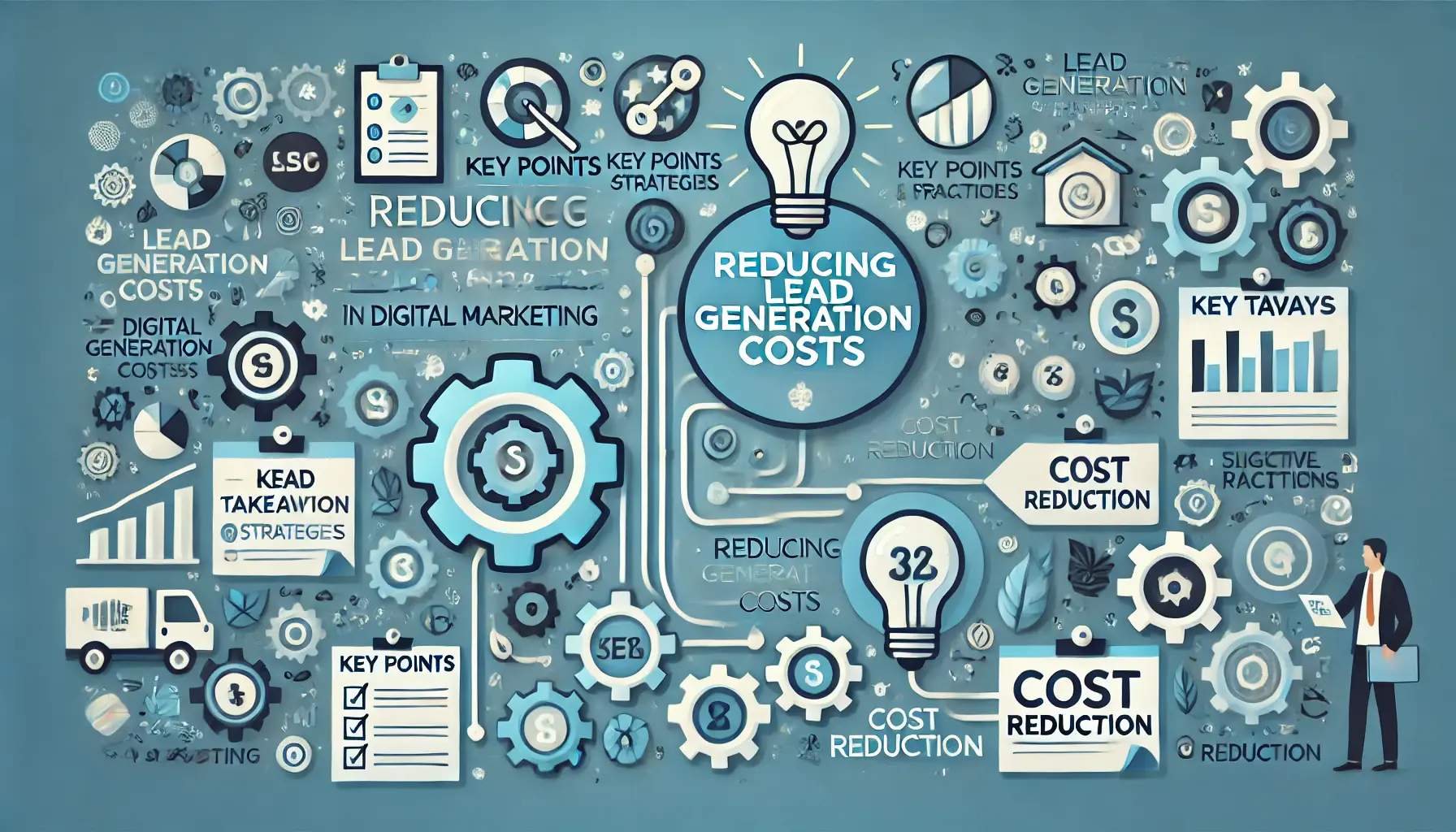
An informative image summarizing key strategies for lowering lead generation costs.
Key Takeaways for Reducing Lead Generation Costs
Let’s review the most important takeaways for reducing lead generation costs without sacrificing lead quality:
- Optimize Ad Copy and Landing Pages: Well-crafted ad copy that speaks directly to your audience and leads them to a relevant landing page can significantly improve conversion rates and reduce CPL.
- Target the Right Audience: Allocate your budget to users who are most likely to convert. Use features like Custom Audiences and Similar Audiences to minimize wasted ad spend.
- A/B Test Your Ads and Landing Pages: Continuously test different versions of your ads and landing pages to refine your strategy and improve results.
- Monitor and Adjust Campaign Settings: Regularly review and tweak your campaign settings, such as bidding strategies and ad scheduling, to optimize your budget allocation.
- Leverage Smart Bidding: Take full advantage of Google’s Smart Bidding to optimize real-time bids, ensuring that your budget is used efficiently and effectively.

An informative image representing the concept of long-term success in lead generation.
Achieving Long-Term Success in Lead Generation
Reducing lead generation costs is an ongoing process that requires consistent monitoring, testing, and adjustment.
It’s just as important to lower your CPL as it is to ensure that the leads you generate are qualified and translate into long-term customers.
By balancing cost reduction with lead quality, you’ll be able to maximize your return on investment (ROI) with your Google Ads campaigns.
Incorporating these strategies into your lead generation efforts will help you achieve long-term success.
Whether you’re running a small business or managing large-scale campaigns, understanding the factors that drive lead generation costs and how to optimize them is what will set you apart in today’s competitive digital marketing landscape.
To reduce lead generation costs while maintaining lead quality, focus on optimizing ad copy, targeting the right audience, and using smart bidding strategies.
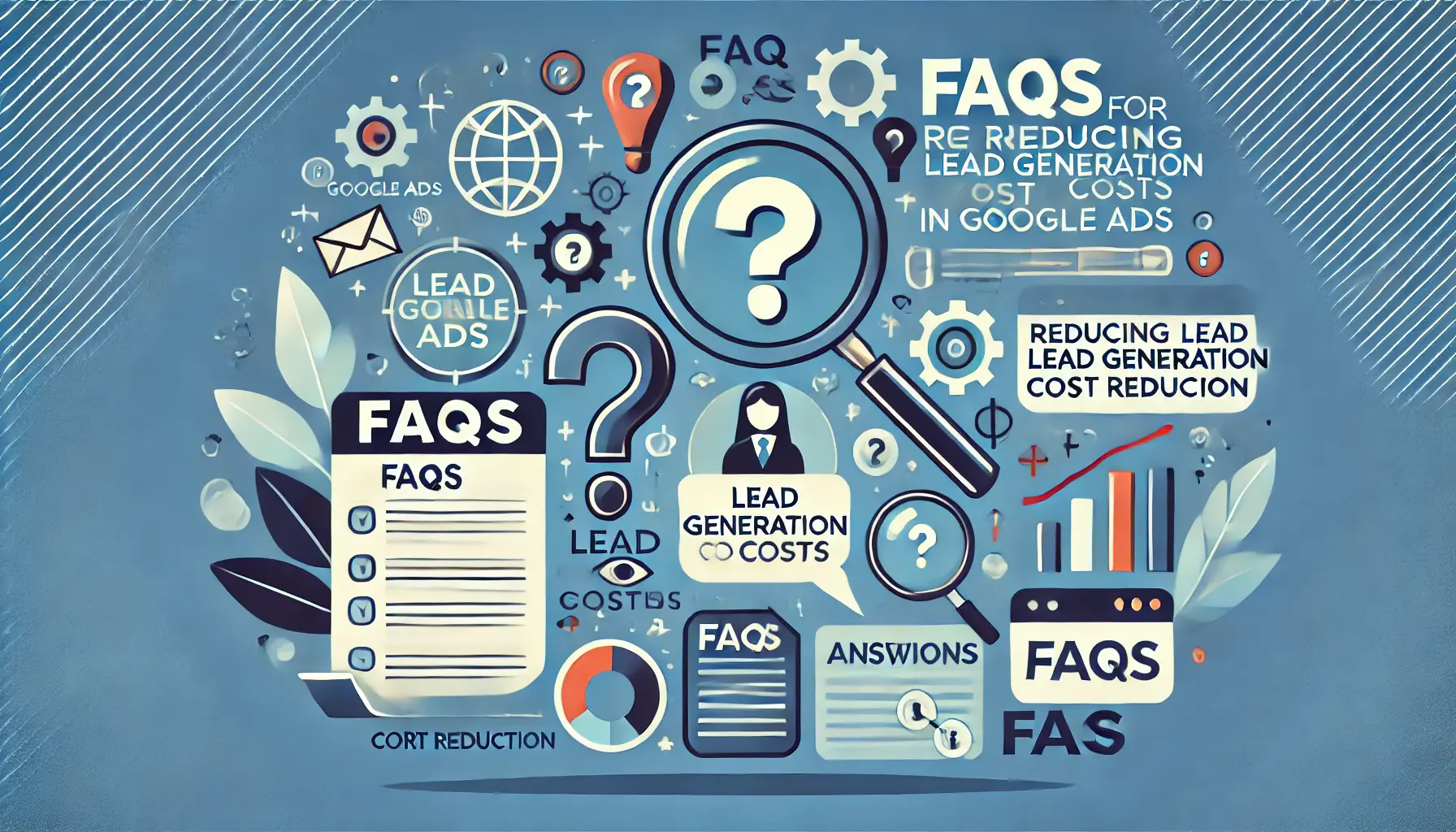
An informative image representing frequently asked questions about reducing lead generation costs.
Your campaigns can be managed by an agency specialized in Google Ads, check out our service page.
FAQs for Reducing Lead Generation Costs in Google Ads
Below are some common questions about reducing lead generation costs while maintaining lead quality in Google Ads campaigns:
Optimizing ad copy to reach the right audience, combined with strategies such as Smart Bidding, will help lower lead generation costs without sacrificing the quality of leads.
Target CPA and Smart Bidding are effective methods that help reduce your cost per lead (CPL) while focusing on conversions.
These strategies adjust bids in real-time to enhance cost efficiency.
A/B testing allows you to continuously improve ad performance by testing different versions of ads and landing pages.
This leads to better results and reduced costs over time.
It’s recommended to review your campaign settings, including bidding strategies and ad scheduling, at least every two weeks to ensure optimal budget allocation and performance.
